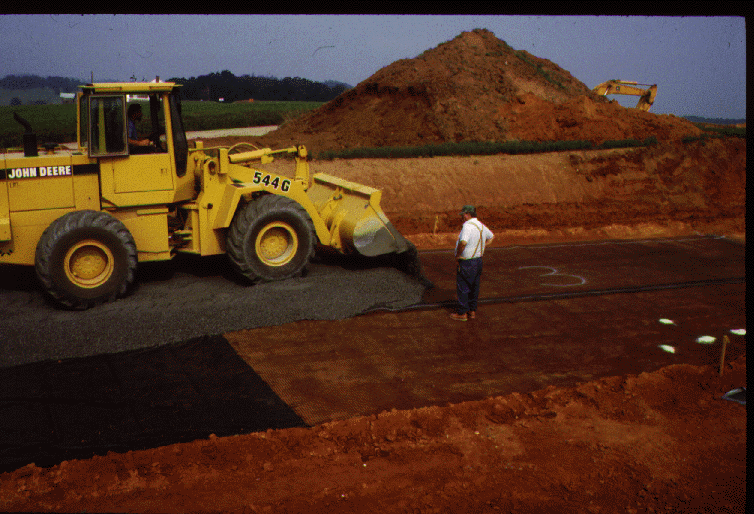
Geotextiles double highways' lives
Manmade wetlands can treat wastes at more homes
Geotextiles double highways' lives

Virginia Tech researchers have found a way to almost double the normal 20-year life of certain sections of highway. Potential savings could amount to $35,000 per mile in maintenance costs over the life of a two-lane road.
Civil engineering professor Imad Al-Qadi and other researchers have been testing the use of geotextiles under roadbeds with funding from industry and the Center for Innovative Technology. The polymeric material separates the soft soil from the pavement system so the road will not weaken and form potholes and cracks due to aggregate penetration into soil or soil migration to the pavement system.
Al-Qadi says to extend the life of a road, it's important to keep the roadbed stone separate from the underlying soils, especially in secondary roads and areas where environment variation is an important factor.
Field tests over the past three years have proven the geotextiles effective in extending road life. "It is working even better than we though it would," says Al-Qadi. "Pavement without geotextiles built at the same time and in the same area has already failed."
Test segments have been designed with imbedded sensors to monitor stresses and strains and to record temperature and moisture content. Ground penetrating radar examines activity under the roadbed.
"Each time a vehicle passes, it triggers the system," Al-Qadi says. The data is collected by computers in a bunker built on the roadside. Each night, the researchers download the data to computers on campus.
Back to Contents
Manmade wetlands can treat wastes at more homes
Land currently unsuitable for home building could be opened to development by using a supplemental wastewater treatment system being tested at Virginia Tech. About 60 percent of the soil in this nation is too shallow, too permeable, or otherwise unsuitable for conventional wastewater treatment systems. Two Virginia Tech professors are developing criteria for using "constructed wetlands" to supplement conventional on-site wastewater treatment systems, such as septic tanks. They anticipate those criteria will be considered for implementation by the Virginia Department of Health within the year.
"This is a relatively inexpensive, low-maintenance system," says Ray Reneau Jr., professor of crop and soil environmental sciences.
Reneau and professor Chuck Hagedorn hope the system will ease pressure to develop prime farm land into homesites.
The constructed wetlands system takes advantage of natural biological processes. The wetland bed is planted with aquatic plants that produce "a very hostile environment for fecal organisms," Hagedorn says. Regardless of the season, fecal organisms passing through the wetland zone are gobbled up by the wetland flora and fauna within a few days, he says. A typical household would send its effluent through two 7.5-foot by 50-foot beds of wetlands into a drainfield. No odor is associated with the wetlands, which could appear to be part of the landscaping.
Reneau notes that homeowners are permitted to use constructed wetlands as a part of their wastewater treatment system, but that current health department rules still require traditional soil depths. The results of this study will provide a scientific basis for state health officials to revise those rules downward.
Home | News | Features | Research | Philanthropy | President's Message | Athletics | Alumni | Classnotes | Editor's Page